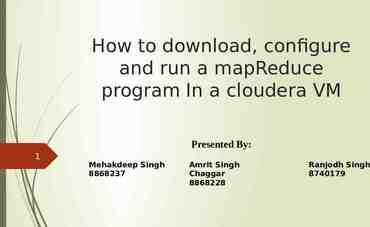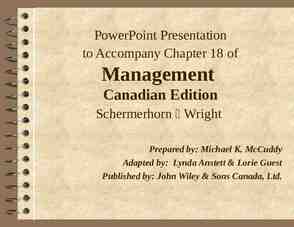Chapter 11 Automated Hematology
72 Slides1.20 MB

Chapter 11 Automated Hematology

Acknowledgements Addisa Ababa University Jimma University Hawassa University Haramaya University University of Gondar American Society for Clinical Pathology Center for Disease Control and PreventionEthiopia

Outline Hematology Whole Blood Cell Analyzers Instrumental Principles Initial Set-up Daily Start-up Calibration Quality Control Histograms Flagging Problem Solving – Troubleshooting Case Study

Objectives At the end of this lesson, the students will be able to: Describe the general characteristics of automated haematology analyzers State the different principles of automated analyzers Explain the process of calibration, parameters and situations which necessitate calibration Describe the use of quality control

Cont’d Discuss detection of errors (flagging) and the remedial actions with automated haematology analyzers Describe key aspects of automated haematology analyzers, including histogram use and interpretation

What is Automated Hematology? Is the performance of Hemotology Lab investigations by using Automated Analyzer as opposed to manual procedures. There are various Hematology analyzers depending on operating principles and the parameters they performanaly.

What do Automated Analyzers Perform? Counting of WBCs, RBCs and Platelets Measurement of Hemoglobin Calculation of Hematological Indices (Absolute Values) Some can perform Differential counts (3 part and 5 part) Some can also indicate abnormalities of RBCs, Platelets and WBCs (Flags)

Advantages of Automated Analysers They analyze and produce results within a very short time. If properly used, they produce Precise and Accurate results. They significantly increase the number of patients to be served, making more efficient use of laboratory resources.

CBC Performed on an Automated Hematology Cell Analyzer Well mixed EDTA sample is used CBC is a group of tests (WBC, RBC, Hgb, Hct, Red Cell Indices, Platelet Count, and automated differential) Tests are performed simultaneously (usually in less than a minute) When performance limits of automated hematology analyzer is exceeded, manual method of cell counting and blood smear review must occur

Haematology Whole Blood Analyzer

CELL-DYN 1800 Technical Specifications System Features Utilizes impedence resistance to measure human cells;18 parameters measured Open-sampling system with throughput of up to 60 samples per hour; 30 µl aspiration volume Accurate 3-part white blood cell differential analysis Uses only 3 reagents, including cyanide free lyse that are individually packaged and monitored to eliminate waste and improve operator safety Q.C. built in system- Levey-Jennings, Westgard Rules and X B

CELL –DYN 1800 Technical Specifications Post-Draw Stability 48 hours (5 DIFF) Throughput 60 samples / hour Sample Volume 30 µL (whole blood) Sample Numeric keyboard Identification Flags Number of Reagents User definable high/low flagging of patient results 3 reagents only

CELL-DYN 1800 Performance Specifications Parameter CV% (95% confidence limit) Precision (Reproducibility) WBC less than or equal to 2.5% RBC less than or equal to 1.7% HGB less than or equal to 1.2% MCV less than or equal to 1.5% PLT less than or equal to 6.0%

Optical Detection Principle In the optical or hydrodynamic focusing method of cell counting and cell sizing, laser light is used A diluted blood specimen passes in a steady stream through which a beam of laser is focused As each cell passes through sensing zone of flow cell, it scatters focused lights Scattered light is detected by a photodetector and converted to an electrical pulse Number of pulses generated is directly proportional to the number of cells passing through the sensing zone in a specific time period

Electrical Impedance Principle Utilizes non-conductive properties of blood cells As blood cell passes through orifice of aperture it displaces its own volume Increased resistance between electrodes results in an electrical pulse RBCs and platelets counted together, separated by pulse heights Hydrodynamic focusing forces cells to pass single file through aperture

Haematology Automation Basic Technology: Automated CBC Cell counting and sizing (WBC,RBC,PLT) Electrical impedance method Optical detection principle Light scatter and/or absorption (with or without cytochemistry) Haemoglobin: spectrophotometric method Cyanmethaemoglobin Cyanide free Haemoglobin

Beckman-Coulter Haematology Whole Blood Analyzers

Haematology Whole Blood Analyser ABX Pentra 60 C

ABX – Pentra 60 C Technical Specifications Data Analysis 26 Parameters: WBC, RBC, Hgb, Hct, MCV, MCH, MCHC, RDW, PLT, MPV, PCT, PDW Percentage and absolute counts of: LYM, MON, NEUT, EOS, BASO, ALY (Atypical Lymphocytes) and LIC (Large Immature Cells) High-resolution leukocyte differential matrix RBC, PLT, and Basophil histograms Quantitative and qualitative flags

ABX – Pentra 60 C Technical Specifications Post-Draw Stability Throughput Sample Volume Sample Identification Flags Number of Reagents 48 hours (5 DIFF) 60 samples / hour 55 µL (whole blood) Numeric keyboard 46 possible pathologic flags 5 reagents only

Cytometry/Cytochemistry DHSS (Double Hydrodynamic Sequential SystemTM ) Absorbance Neutrophils Eosinophils Lymphocytes Monocytes Atypical Lymphocytes (ALY) Volume Large Immature Cells (LIC)

Sysmex Haematology Whole Blood Analyzer

Initial Set-Up “Out of the Box” For the vendor’s service engineer to do: Check instrument for visual damage Check for any loose parts or connections Make sure all computer boards are properly sealed Check the socket to verify proper voltage outlet

Delivery of Equipment

Cont’d For the vendor’s service engineer Plug instrument power cord into (voltage stabiliser) electrical supply Confirm the correct voltage on instrument Main power supply Photometric voltage Any other voltage supply that is pertinent to instrument functions

Cont’d For the vendor’s service engineer Permit instrument to stabilise/equilibrate Let all components reach proper temperature Set in any parameters that may be required Ranges Temperatures Adjustment for altitude if necessary

Ensure the Instrument is Functioning Properly 1 Check the reagent containers for: Sufficient quantity Not beyond expiration date No precipitates, turbidity, particulate matter, or unusual color Proper connections between the instrument and the reagent containers

Cont’d 2 Check the waste container for: Sufficient capacity Proper connections Perform daily startup per instrument manual In addition to verifying daily startup results, verify 3 acceptable Reproducibility Carryover Control Results

Calibration Calibration fine tunes your Haematology analyser and provides the most accurate results possible In the normal process of tracking data for an extended period of time, your laboratory can make a specific decision to recalibrate a given parameter. Never adjust to a specific value for an individual sample

Cont’d For best performance, calibrate all the CBC parameters The WBC differential is calibrated at the factory, it does not require calibration in the laboratory

When to calibrate You should calibrate your instrument At installation After the replacement of any component that involves dilution characteristics or the primary measurements (such as the apertures) When advised to do so by your service representative

When to Check the Calibration As dictated by your laboratory procedures When controls begin to show evidence of unusual trends When controls exceed the vendor’s defined acceptable limits

Reproducibility Check Checks how close several results from the same specimen are to each other (reproducibility) Reproducibility checks also known as precision checks Measurement is expressed as a percentage of deviation from the mean which is called a Coefficient of Variation or CV Reproducibility is not a measure of accuracy, but true accuracy is not possible unless an instrument is precise Check instrument manual for procedure

Carryover Check Carryover is the transfer of the previous sample to the current sample High to low carryover checks to verify the high results of one sample do not affect the low results of the next sample If carryover check does not pass, consult the instrument manual for how to troubleshoot

CELL-DYN 1800 Performance Specifications Precision Parameter Result Tolerance % LYM plus or minus 3.1% % MID plus or minus 1.6% % GRAN plus or minus 3.5%

Daily Start-Up Procedures* Daily cleaning Background counts Electronic checks Check calibration Run controls Compare open and closed mode sampling (use a normal patient sample) * Check instrument manual for procedures Must be within specified limits

Quality Control Purpose of QC Assures proper functionality of instrumentation Means of assuring accuracy of unknowns Monitors the integrity of the calibration When controls begin to show evidence of unusual trends When controls exceed the vendor’s defined acceptable limits

Quality Control Methods Assayed or unassayed stabilised material (Commercial) Patient replicates Delta checks

Cont’d Assayed stabilised material Known values Can be purchased in volume Can be run over time Easily illustrates trends and shifts

QC method: Assayed or Unassayed Stabilised Material Commercially available Known values (assayed only) Analyse low, normal and high control Results stored in the instrument computer (Pentra only) Monitored with Levey-Jennings graphs Easily illustrates trends and shifts

Recording of Quality Control Results on Levey-Jennings Quality Control Charts

QC Method: Patient Replicates Previously analysed patient sample Easily obtained Cost effective Results and samples readily available

QC Method: Delta Checks Compare a patient’s own leukocyte, haemoglobin, MCV, and platelet values with previous results If difference between the two is greater than laboratory-set limits, current result is flagged for review

What should be done if QC Results are Unacceptable? Verify instrument functioning Check for shifts and trends Check integrity of material Troubleshoot Repeat the assay

When a Control is Outside its Expected Range 1 Ensure the control Material was mixed and warmed properly If not, mix it according to the package insert Identification information was entered correctly If using the numeric keypad, verify you typed the correct information Setup information (assigned values and expected ranges) matches the control package insert for the current lot number being used If they do not match, change the control’s information to match the package insert

Proper Mixing Blood rotator: Proper mixing may be achieved by a rotator or by hand.

When a Control is Outside its Expected Range 2 If any of the problems existed, rerun the control; otherwise, proceed to the next step 3 Rerun the control to ensure the problem was not a statistical outlier 4 Ensure the control material was not contaminated by running another vial or level of control

QC Corrective Action Log Sheet 1. Write the date on the corrective action log sheet 2. Write the condition, such as “WBC high on normal control” 3. Write the initials of the person who noticed the condition

Cont’d 4. Write the date the control was run 5. Write the action that you performed, such as “repeated-back in range” 5. Write the initials of the person who performed the corrective action

Histograms as seen on an Automated Haematology Analyser

General Histogram Characteristics Graphic representations of cell frequencies (Yaxis) versus cell sizes (X- axis) in femtoliters (fL) Provide information about erythrocyte, leukocyte, and platelet frequency and their distributions about the mean, and also depict presence of subpopulations

General Histogram Characteristics Provide means of comparing sizes of patient’s cells with normal populations Shifts in one direction or the other can be of diagnostic importance

Histograms: Electrical Impedance Method RBC,PLT, and WBC data are plotted in the form of a histogram Cell number on Y-axis and cell size on X-axis MCV (mean cell size of all red cell pulses) are derived from the RBC histogram HCT, MCH and MCHC are calculated by the standard formulas

Histograms: Electrical Impedance Method From WBC histogram, three cell populations (lymphocytes, mononuclear cells and granulocytes) are delineated on difference of their cell size Lymphocytes – 35 to 90 fL Mononuclear cells – 90 to 160 fL Granulocytes – 160 to 450fL

Histogram WBC: Distribution with three individual peaks and valleys at specific regions representing the lymphocytes, monocytes, and granulocytes All curves normally start and end at baseline

Normal Histogram WBC: Trimodal distribution with individual peaks and valleys at specific regions LYMPHS 35-90 fL MONOS 90-160 fL GRANS 160-450 fL RBC: Unimodal, 36 fL PLT: Unimodal, 2-20 fL (fitted 0-70 fL) All curves normally start and end at baseline All curves normally represent Gaussian distributions

Histograms RBC, PLT, and WBC plotted on histogram X-Axis Cell size in femtoliters (fL) Y-Axis # of cells

WBC/Coulter Histogram as a Quality Control Tool Abnormality / Indicator Probable Cause Comment WBC histogram (lymph peak) does not start at baseline Giant platelets, nRBC, Plt clumping Review smear, correct for nRBC Left Shift Review smear Neutrophilia Review smear Elevation of left portion of granulocyte peak Elevation of right portion of granulocyte peak Trail extending downward at extreme left, or lymph peak not starting at baseline Peak to left of lymph peak or lymph peak widening towards left nRBC, Plt clumping, Review smear unlysed RBC, cryoproteins, and for nRBC parasites Review smear & nRBC correct nRBC Widening of lymph peak to right Atypical lymphs, blasts, plasma cells, hairy cells, eosinophilia, basophilia Review smear Wider mono peak Monocytosis, plasma cells, eosinophilia, basophilia, blasts Review smear

RBC/Coulter Histogram as a Quality Control Tool Abnormality / Indicator Probable Cause Comment Left of curve does not touch baseline Review smear Schistocytes and extremely FBC and Platelet small red cells histogram Bimodal peak Transfused cells, therapeutic response Review Smear Right portion of curve extended Red cell autoagglutination Review FBC & Smear Left shift of curve Microcytes Review smear & FBC Right shift of curve Macrocytes Review smear & FBC

Platelet/Coulter Histogram as a Quality Control Tool Abnormality / Indicator Peak or spike at left end of histogram (2-8 Fl) Probable Cause Cytoplasmic fragments Spike towards right end of histogram Schistocytes, microcytes, giant platelets Bimodal peak Cytoplasmic fragments Comment Review smear Review smear FBC ( MCV & RDW) ( MPV & PDW) Review smear

Flagged/Abnormal Results Questionable or abnormal results are flagged for verification by additional means for WBCs, RBCs, and/or platelets Different types of flags exist for different instruments - consult instrument manual Smear should be reviewed when flags exist according to standard operating procedures

Review of Standard Formulas for RBC Parameter 1 2 3 HCT (l/l) RBC(x10¹²/L) x MCV (fL) MCH (pg/RBC) MCHC(g/dL) HGB (g/dL) x10 RBC (x 10¹²/L) HGB (g/dL) x 10 HCT(l/l)

Preventive Maintenance

Automated HaematologyTraining Checklist Locate important procedures in the appropriate manual including: Startup and shutdown procedures QC and calibration procedures Sample analysis procedures Reagent replacement procedures Printer paper and ribbon replacement procedures Troubleshooting procedures

Cont’d Identify basic instrument modules/components and describe their functions Correctly perform startup, clean cycle, and shutdown procedures Explain the importance of the startup, clean cycle, and shutdown procedures and the frequency with which they should be performed Perform appropriate Quality Control checks

Cont’d Review, delete and set up control files Perform all preliminary procedures required for calibration Perform the CBC calibration and document the results according to your laboratory’s protocol Perform sample analysis in the primary, secondary, predilute modes

Cont’d Recognise the basic principles of parameter derivation and state if a parameter is directly measured, derived from a histogram, or computed Review data and recognise if a scatterplot is normal or abnormal Explain what a particular flag indicates Recognise an instrument problem based on abnormal sample results, abnormal startup or system test results, abnormal control results, and/or error messages

Vendors for Haematology Whole Blood Analysers Abbott (http://www.abbott.com) Cell-Dyn 1200, Cell-Dyn 1700, Cell-Dyn 3200, CellDyn 4000 ABX Diagnostics (http://www.abx.com) ABX Micros 60 and ABX Pentra 60 C and ABX Pentra 80 ( Tanzania standard for ART laboratories) Beckman-Coulter (http://www.beckmancoulter.com) Ac.T series, STKS, Gen-S,MAXM,HmX Sysmex (http://www.Sysmex.com) SE- series; K-series; T-series

Knowledge Check WBC Clumping 1. What results are affected? 2. What resolutions may be attempted to obtain reliable results?

Knowledge Check Answer WBC Clumping 1. What results are affected? Answer: 1. False decrease in WBC

Knowledge Check Answer 2. What resolutions may be attempted to obtain reliable results? Answers: Redraw another EDTA specimen and review results Collect citrated blood for CBC or CBC/PLT (multiply WBC and PLT by 1.11 to correct for anticoagulant dilution) Incubate blood 37 ºC for 10-30 minutes and reanalyze Estimate WBC from smear and perform manual differential Perform a manual count to verify Append appropriate comment to the result, “WBC Clumps”

Summary Haematology whole blood cell analysers Instrumental principles Initial set-up Daily start-up Calibration Quality control Histograms






